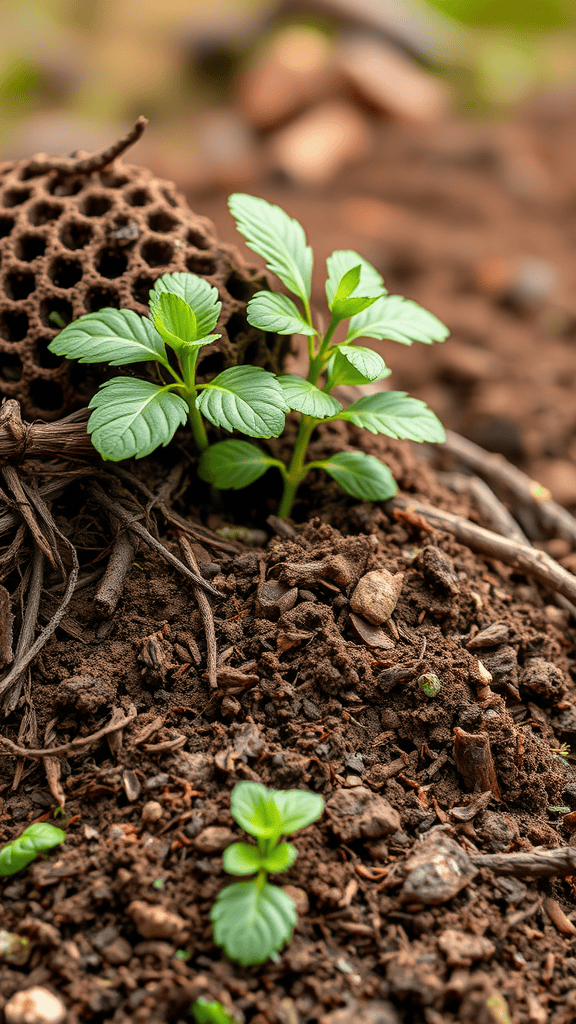The Importance of Brown Materials in Composting: What Are the Best Options?
Composting is a fantastic way to recycle kitchen scraps and yard waste. It transforms organic materials into nutrient-rich soil. To create a successful compost pile, using a proper balance of materials is essential. One significant category of compost materials is brown materials, which provide carbon. Understanding the importance of brown materials can significantly enhance the efficiency of your composting efforts.
Brown materials are the dry, carbon-rich components of your compost. They play a critical role in balancing the nitrogen-rich green materials. Without enough brown materials, your compost may smell unpleasant or take too long to break down. Here are some of the best options for brown materials that you can easily find and incorporate into your composting routine:
- Leaves: Fallen leaves are a free and natural source of carbon. They break down slowly, providing structure and air circulation in your compost bin.
- Straw: Straw is another wonderful brown material. It is light and airy, helping to create space in your compost pile for air, which is essential for the composting process.
- Dry Grass Clippings: Once grass has dried out, it can serve as an excellent brown material. Just be cautious; using too many grass clippings can lead to compaction.
- Wood Chips and Shavings: These materials add bulk to your compost pile. They decompose slowly and are a great way to maintain air circulation.
- Cardboard: Shredded cardboard and paper can be added to your compost as brown materials. Make sure to tear it into small pieces to speed up decomposition.
- Pine Needles: Pine needles can take longer to break down but are an excellent source of carbon. They also add a lovely texture to your compost.
- Hay: If you have access to hay, it can be added as a brown material. Like straw, it is also highly effective in adding carbon and improving aeration.
- Newsprint: This is a great alternative to cardboard. Just make sure to use black and white pages without colored ink.
These brown materials into your compost can improve its structure and speed up the composting process. Keep in mind that the ideal carbon-to-nitrogen ratio for compost is typically around 30:1. This means that for every part of nitrogen-rich green material, you should add approximately three parts of brown material.
Balancing brown and green materials not only encourages healthy microbial activity but also helps prevent messes and bad odors in your compost pile. Mixing the materials thoroughly ensures that the microorganisms can effectively break down the organic matter.
When selecting your brown materials, be aware of their sources. It’s best to use untreated wood, organic cardboard, and natural materials free from chemicals. Items like glossy paper, processed wood, or synthetic materials can hinder your composting efforts.
Additionally, the size of your brown materials matters. Smaller pieces decompose faster, while larger chunks take longer. Chopping or shredding larger pieces like cardboard and leaves can significantly improve how quickly they break down. Aim for uniformity in size to promote even composting.
It’s also essential to monitor your compost pile’s moisture level. Brown materials tend to absorb water, so you might need to add some water if it feels dry. On the other hand, if your compost pile smells or is too wet, adding more brown materials can help absorb excess moisture.
The significance of brown materials in composting cannot be overstated. They are vital for creating a balanced, odor-free, and efficient composting process. By choosing the right brown materials and maintaining proper ratios with green materials, you can produce high-quality compost that benefits your garden and the environment.
So next time you gather compost materials, remember to consider the powerful role of brown materials. This simple yet impactful choice can lead to gardening success and a greener planet.
Tips for Balancing Brown and Green Materials in Your Compost Pile
Creating a thriving compost pile requires a thoughtful blend of brown and green materials. Balancing these components is key to producing rich, nutrient-dense compost. But what exactly do these terms mean? Brown materials are carbon-rich and include items like dry leaves, straw, and cardboard. Green materials, on the other hand, are nitrogen-rich and commonly consist of grass clippings, fruit scraps, and vegetable peelings. Understanding how to efficiently combine these materials can enhance your composting experience and lead to better results.
So, how do you achieve this balance? First, it’s essential to recognize the ideal ratio. Most experts recommend a 30:1 ratio of carbon to nitrogen in your compost. This means for every 30 parts of brown materials, you should add about 1 part green materials. You don’t have to measure precisely, but keeping this balance in mind will help speed up the decomposition process.
When starting your compost pile, consider layering your materials effectively. Begin with a base layer of browns to create good airflow, which is vital for the microbial activity necessary for composting. Here’s a quick method to layer your compost:
- First Layer: Start with a 3-4 inch layer of browns, like dry leaves or shredded cardboard.
- Second Layer: Add a thinner layer of greens, such as fresh grass clippings or vegetable scraps.
- Repeat Layers: Continue adding layers in this fashion, alternating between browns and greens.
It’s important to remember that not all browns are created equal. Some brown materials decompose faster than others. Here are some of the best choices for brown materials:
- Dry Leaves: Easily available in autumn, they provide excellent carbon content.
- Straw and Hay: Both are great for compost, with straw being preferable due to its lower nutrient levels that won’t overpower your compost.
- Cardboard: Shredded pieces of cardboard can add bulk and improve aeration.
- Pine Needles: While they break down slower, they add valuable carbon and help maintain moisture levels.
- Sawdust: Use in moderation as it can pack down and restrict airflow if used excessively.
On the flip side, you also need high-quality green materials. These materials supply nitrogen and encourage microbial growth. Some great sources of green ingredients include:
- Grass Clippings: A readily available source of nitrogen, use fresh clippings, but avoid those treated with chemicals.
- Fruit and Vegetable Scraps: Kitchen waste is perfect, just be cautious about adding large quantities of citrus, as they may attract pests.
- Coffee Grounds: Not only do they provide nitrogen, but they also attract earthworms, which help break down the compost.
- Eggshells: Though not nitrogen-rich, they add valuable calcium and can help balance pH levels in your compost.
In addition to layering, turning your compost regularly will mix materials and promote even breakdown. Every 1-2 weeks, give your compost a good stir. This aerates the pile and allows the microbes to do their work more efficiently. If your compost smells bad, it may be a sign of insufficient air or too many greens. Adding more brown materials can help balance it out.
Monitoring moisture is another crucial factor when managing your compost pile. Aim for a consistency similar to a wrung-out sponge. Too wet? Add more browns. Too dry? Incorporate some greens or sprinkle in water until the right consistency is achieved.
It’s wise to understand that flexibility is key in composting. Environmental factors such as weather and climate can affect how quickly or slowly your materials decompose. So, always keep an eye on your pile, make adjustments when needed, and don’t fret if you have more of one type of material than another. With practice, you’ll find your own rhythm and optimal balance.
By understanding how to balance your brown and green materials effectively, you’ll create a compost pile that breaks down efficiently, enriching your garden space while reducing waste. Happy composting!
Conclusion
Brown materials play a crucial role in creating healthy compost. By incorporating the best options, such as dry leaves, straw, shredded paper, and cardboard, you can achieve the ideal carbon-to-nitrogen ratio necessary for effective decomposition. These materials provide essential structure and aeration, helping microorganisms thrive in your compost pile. Understanding the importance of these brown materials ensures that your compost becomes rich, fertile, and ready for your garden.
To successfully balance brown and green materials, aim for a mix that typically includes three parts brown for every one part green. This balance not only enhances the composting process but also prevents issues like odor and excessive moisture. Layering brown and green materials will help maintain airflow and moisture levels, ensuring your compost pile remains active and effective.
Regularly monitoring your compost and turning it every few weeks will promote decomposition and speed up the process. Always be mindful of what materials you add; while some items are excellent contributors, others can hinder compost health. Avoid adding glossy paper, meat products, or dairy, as these can attract pests and create unpleasing odors.
Ultimately, by selecting the right brown materials and maintaining the appropriate balance with greens, you’ll foster a thriving compost ecosystem. This not only benefits your garden but also contributes positively to the environment. Embrace composting as a simple, rewarding way to recycle waste and enrich your soil, leading you toward a more sustainable lifestyle. Happy composting!
As an Amazon Associate, I earn from qualifying purchases.

